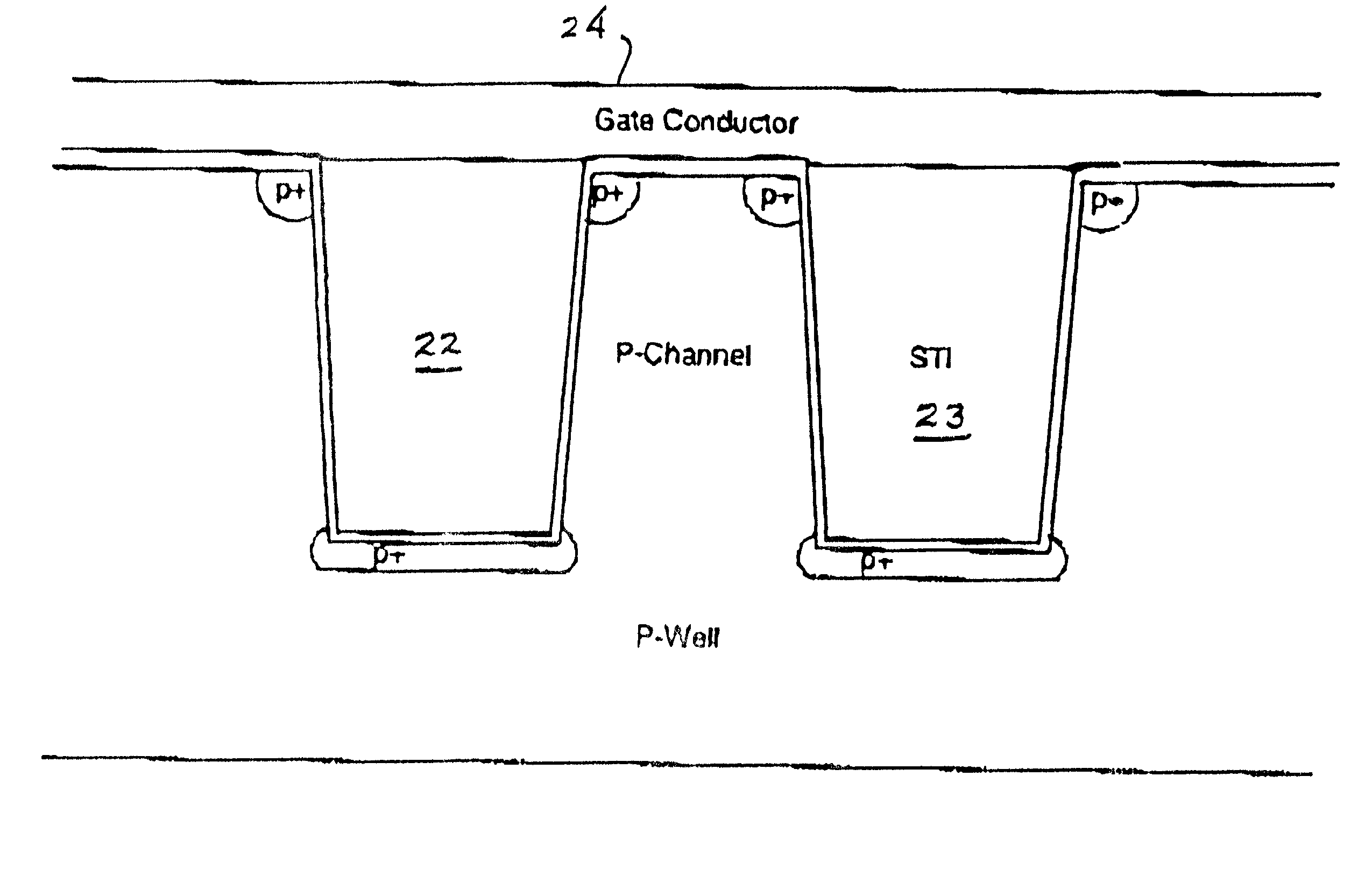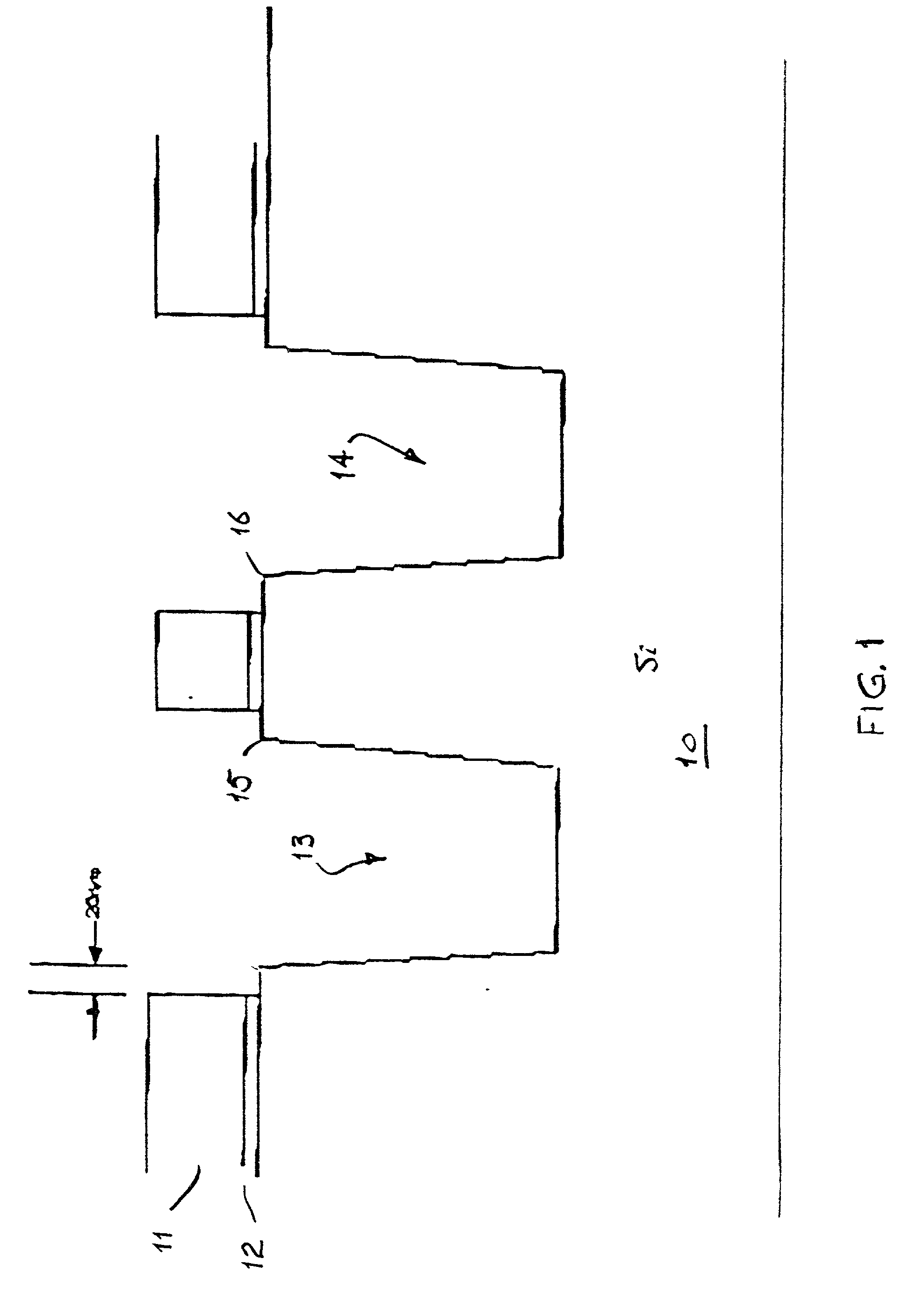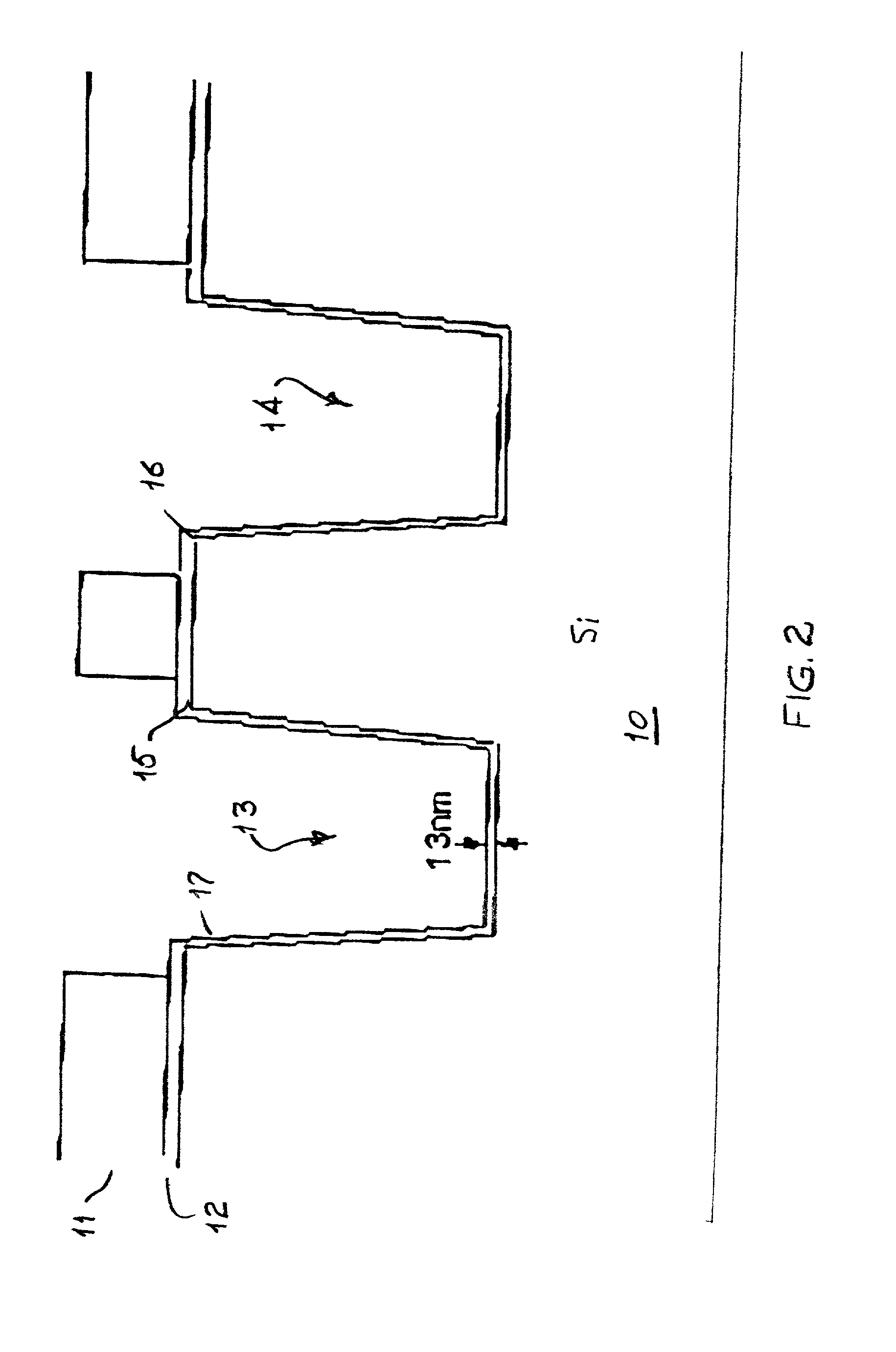Self-aligned corner Vt enhancement with isolation channel stop by ion implantation
a self-aligning, corner vt technology, applied in the manufacturing of semiconductor/solid-state devices, basic electric elements, electric devices, etc., can solve the problems of sub-vt leakage, overall degradation of chip yield and performance, and degraded corner threshold voltage (vt) of fet devices
- Summary
- Abstract
- Description
- Claims
- Application Information
AI Technical Summary
Problems solved by technology
Method used
Image
Examples
Embodiment Construction
[0015] Referring now to the drawings, and more particularly to FIG. 1, there is shown in cross-sectional view the first step in the manufacture of an FET device according to the invention. A silicon substrate 10 is prepared by first depositing a layer of silicon dioxide 11 and then a layer of silicon nitride 12. Trenches 13 and 14 are formed in silicon substrate 10 by using a photolithiographic process to define the trenches in a photoresist applied to the silicon nitride layer 12 and then etching the trenches through the exposed silicon nitride and silicon dioxide layers into the silicon substrate as is conventional in the art. These trenches will be used to provide STI for the FET device. Next, the photoresist used to define the trenches 13 and 14 is removed, and the silicon nitride and silicon dioxide layers 12 and 11 are pulled back on the wafer surface to leave exposed edges 15 and 16. In the example shown, 120 nm of silicon nitride and 5 nm of silicon dioxide are simultaneousl...
PUM
 Login to View More
Login to View More Abstract
Description
Claims
Application Information
 Login to View More
Login to View More - R&D
- Intellectual Property
- Life Sciences
- Materials
- Tech Scout
- Unparalleled Data Quality
- Higher Quality Content
- 60% Fewer Hallucinations
Browse by: Latest US Patents, China's latest patents, Technical Efficacy Thesaurus, Application Domain, Technology Topic, Popular Technical Reports.
© 2025 PatSnap. All rights reserved.Legal|Privacy policy|Modern Slavery Act Transparency Statement|Sitemap|About US| Contact US: help@patsnap.com



